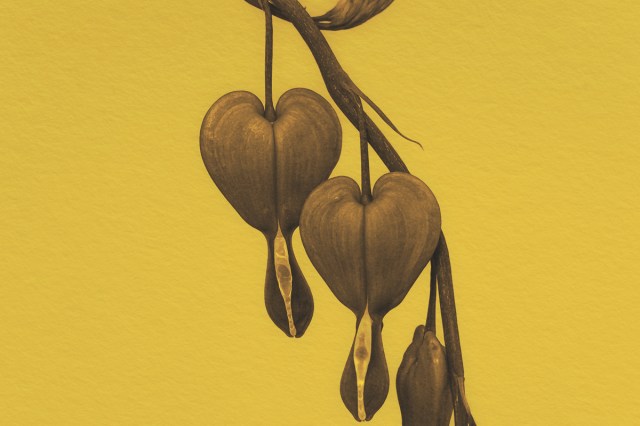
A “bleeding heart” may sound like something you’d see a cardiologist for, but it isn’t a medical malady. Rather, it’s a term that was originally coined to positively describe an outpouring of emotion, but over time evolved to take on a more derogatory context, specifically when referencing a person’s political beliefs. Let’s examine the etymological evolution of this uniquely diverse phrase.
One of the earliest written examples of “bleeding heart” is found in Geoffrey Chaucer’s 14th-century poem Troilus and Criseyde. In this work, Chaucer writes, “For which him thought he felte his herte blede,” using the metaphorical bleeding heart to convey the character’s emotional anguish. By the 16th century, the phrase began to take on a religious meaning, as Jesus was often described to have a “bleeding heart” for those who were suffering. And by the late 17th century, the phrase took on a botanical use to describe a pink and white heart-shaped plant with droopy flowers.
In the 20th century, the phrase “bleeding heart” got completely turned on its head, when it was used by conservative writer Westbrook Pegler to ridicule those who supported liberal President Franklin D. Roosevelt. Pegler frequently used the phrase to lambast the “bleeding-heart liberals” he disagreed with. Before long, the phrase was being used by right-leaning rhetoricians around the country, including Senator Joe McCarthy, who used it to attack newsmen he disagreed with, such as Edward R. Murrow. “Bleeding heart” continues to have a political connotation today as it describes passionate people on all sides, though the phrase has lost some of its staunchly negative reputation.















